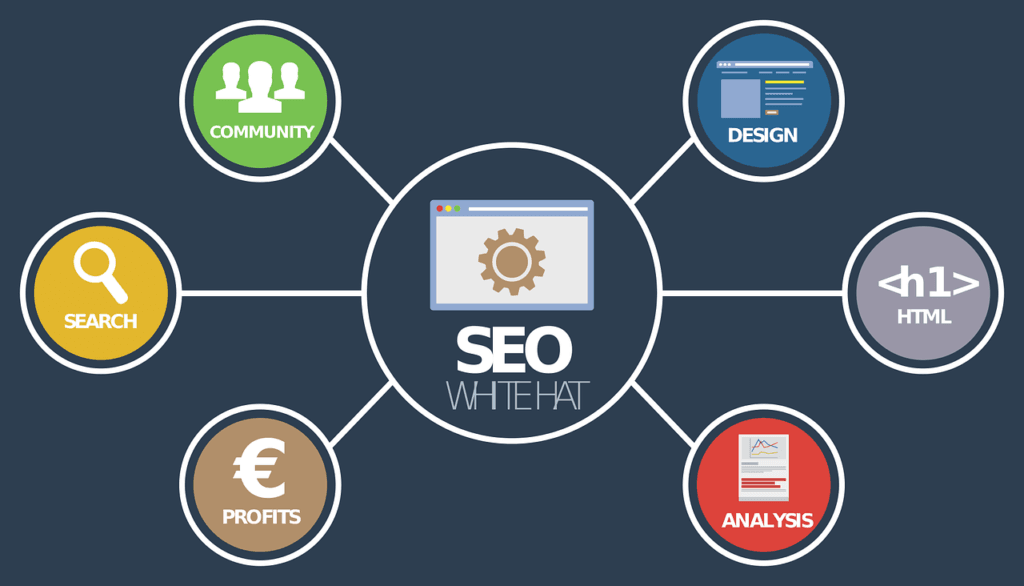Understanding Backlinks in SEO
Backlinks are a fundamental component of search engine optimization (SEO). They play a crucial role in determining how search engines rank web pages and can significantly influence your website’s authority and visibility.
Importance of Backlinks
Backlinks function as endorsements from one website to another. When reputable sites link to your content, search engines perceive these as votes of confidence in your page’s value and relevance. This endorsement contributes to your website’s authority. According to Moz, high-quality backlinks enhance a website’s visibility in search results, making them integral to SEO strategies.
Research by Ahrefs indicates a strong positive correlation between backlinks and higher search engine rankings. Their findings show that most top-ranked pages receive between 5% and 14% more followed links each month, underscoring the necessity of backlinks for maintaining robust SEO performance in 2024 (Search Engine Land).
| Key Benefits of Backlinks |
|---|
| Boosts website authority |
| Improves search visibility |
| Increases referral traffic |
| Enhances credibility of content |
Types of Backlinks
Various types of backlinks can impact your SEO in distinct ways. Understanding these types allows you to strategize effectively when building your backlink profile. Here are the primary categories:
| Type of Backlink | Description |
|---|---|
| Editorial Backlinks | Links that are included in web content naturally, often due to high-quality content. |
| Guest Posting Backlinks | Links acquired through writing articles for other websites. |
| Image Backlinks | Links generated when images on your site are used and credited by others. |
| Do-Follow Backlinks | Links that allow search engines to follow and pass authority to your site. |
| No-Follow Backlinks | Links that do not pass authority but still can drive traffic. |
| Sponsored Backlinks | Paid links used for promotions that indicate to search engines that content may be paid. |
| UGC Backlinks | User-generated content backlinks that signal credibility and engagement. |
Each type of backlink has its own unique impact on your SEO strategy. Utilizing a diverse range of backlinks allows for a more robust approach to improving your website’s ranking on search engines.
To further enhance your digital marketing strategy, consider exploring additional techniques such as social media marketing strategies or implementing content marketing services that focus on generating high-quality backlinks for your business.
On-Page SEO Fundamentals
On-page SEO, also known as on-site SEO, is essential for optimizing web pages and their content for both search engines and users. It is crucial for improving your search engine optimization (SEO) efforts, as it can lead to higher rankings on Google and drive more organic traffic to your site.
Role of On-Page SEO
The primary role of on-page SEO is to enhance the content and structure of your webpages to make them more appealing to search engines and users alike. Quality, authoritative content serves as the foremost driver of search engine rankings, significantly impacting site traffic, authority, and relevance. Therefore, developing content tailored to user needs while aligning with your SEO strategy is critical.
On-page optimization involves various elements such as title tags, headers, URL structure, and meta descriptions. These factors collectively contribute to your page’s relevance for targeted keywords and phrases, making it easier for search engines to assess and rank your content favorably.
On-Page SEO Best Practices
Implementing effective on-page SEO best practices can substantially improve your search rankings. Here are some fundamental strategies to consider:
- Quality Content
- Focus on creating authentic and valuable content that answers users’ queries. High-quality content is fundamental for ranking well in search engine results.
- Keyword Optimization
- Strategically incorporate relevant keyword phrases throughout your content. This includes using them in headings, subheadings, and within the body text to enhance visibility in search results.
- Meta Descriptions
- Write compelling meta descriptions that encourage clicks. While they may not affect rankings directly, a well-crafted meta description can significantly influence user decisions (Semrush).
- Image Optimization
- Optimize images on your site for better performance. Ensure images are high-quality, relevant to the content, and include descriptive alt text to help search engines understand your images (Google Developers).
- Internal Linking
- Use internal links to guide users to other relevant pages on your site. This approach improves user experience and helps search engines navigate your content better.
Here’s a summary of the essential on-page SEO elements in table format:
| On-Page Element | Best Practice |
|---|---|
| Quality Content | Create valuable, user-focused content |
| Keyword Optimization | Integrate keywords strategically |
| Meta Descriptions | Write click-worthy and relevant descriptions |
| Image Optimization | Use high-quality images with alt text |
| Internal Linking | Connect related content across your site |
For organizations seeking more sophisticated techniques, exploring digital marketing agencies or engaging an SEO agency can offer additional strategies tailored to your specific needs.
Key Factors in SEO Rankings
Understanding the factors that influence your search engine optimization (SEO) rankings is vital for your online success. Two of the most significant components are content quality and relevance, as well as user experience.
Content Quality and Relevance
Quality, authoritative, and authentic content is the primary driver of search engine rankings. Creating content tailored for your users, while aligning with SEO strategies, can greatly increase site traffic, authority, and relevance (Michigan Technological University). Google and other search engines prioritize relevant and authoritative content, making it essential to focus on quality.
To maximize the effectiveness of your content, consider the following best practices:
| Best Practice | Description |
|---|---|
| Develop User-Centric Content | Create content specifically catering to your target audience. Monitoring user feedback can guide improvements. |
| Utilize Keywords Strategically | Incorporate keyword phrases naturally throughout your content to enhance SEO effectiveness. |
| Include Relevant Links | Adding authoritative links within your content boosts its credibility, reinforcing your SEO efforts. |
| Optimize with Schema Markup | Leverage schema.org markup to enhance how your content appears in search engines, improving crawling and recrawling rates. |
Importance of User Experience
User experience (UX) plays a crucial role in driving your SEO rankings. An effective website should be easy to navigate, visually appealing, and responsive on all devices. A positive UX keeps visitors on your site longer, reducing bounce rates, which signals to search engines that your site is valuable.
Some important factors to consider for user experience include:
| User Experience Factor | Description |
|---|---|
| Site Speed | Ensure fast loading times to keep users engaged. |
| Mobile Responsiveness | Optimize your site for mobile devices, as a large portion of users access websites via smartphones. |
| Clear Navigation | Create an intuitive layout that allows users to find information effortlessly. |
| Engaging Design | Utilize appealing visuals that enhance user interaction without slowing down site performance. |
In summary, prioritizing content quality and user experience is essential for improving your search engine rankings. Tailoring your content to serve your audience while ensuring a positive user experience can significantly impact your overall online presence. For further insights, you may want to explore digital marketing agencies or content marketing services that specialize in enhancing these areas.
Impact of Website Visibility
Significance of Search Engine Rankings
Website visibility is a crucial aspect of a successful search engine optimization (SEO) strategy. A website that secures a spot on the first page of search engine results pages (SERPs) receives significantly more clicks than those listed on subsequent pages (HigherVisibility). Essentially, higher rankings lead to increased visibility, which can result in more traffic, enhanced brand awareness, and ultimately higher conversion rates.
Search engines analyze various factors to determine the ranking of web pages. Key indicators include the quality and number of backlinks, which act as a “vote” for the value of your content. High-quality backlinks from reputable sources can substantially improve your page’s authority and ranking. Understanding the significance of achieving and maintaining strong search engine rankings is essential for any marketing strategy.
Strategies to Improve Website Visibility
To enhance your website’s visibility, you can implement several effective strategies:
Optimize for Keywords: Conduct thorough keyword research to identify relevant terms your audience is searching for. Optimize your content for these keywords to improve rankings. Creating separate webpages for distinct keyword phrases can also help target specific searches.
Create High-Quality Content: Focus on producing informative, engaging, and original content that adds value. Well-structured content not only attracts visitors but encourages sharing and backlinks, which are vital for SEO.
Leverage Technical SEO: Ensure that your website is technically sound. This involves optimizing site speed, mobile responsiveness, and secure connections (HTTPS). Technical aspects play a significant role in user experience and search engine rankings.
Build Quality Backlinks: Focus on earning high-quality backlinks from authoritative websites. Backlinks not only improve your site’s credibility but also enhance your rankings in search results (HigherVisibility).
Enhance User Experience: A user-friendly website design improves engagement and reduces bounce rates. Positive user behavior signals to search engines that your site is valuable, potentially boosting your rankings.
Utilize Social Media: Promote your content across social media platforms to reach a larger audience. Increased visibility through shares and likes can lead to more traffic and backlinks.
Implementing these strategies can lead to significant improvements in website visibility, ultimately contributing to more robust search engine rankings and greater success in your digital marketing efforts. For additional insights on various marketing strategies, consider exploring our sections on digital marketing agencies and content marketing services.
The Role of Keywords in SEO
Effective search engine optimization (SEO) hinges on the strategic use of keywords. This section discusses the significance of keyword research and how to utilize keywords effectively in your digital marketing efforts.
Importance of Keyword Research
Keyword research is the foundational step to any effective SEO campaign. It provides insights into what your audience is searching for and helps your business strategically target relevant traffic. Without a solid understanding of the keywords your potential customers are using, you could miss valuable opportunities to attract them to your website.
Conducting thorough keyword research involves several key processes:
- Identifying Keywords: Utilize search engines and tools to identify relevant keywords related to your products or services.
- Analyzing Competitors: Research what keywords competitors are targeting can provide insights into your niche.
- Understanding Search Intent: Determine whether users are looking for information, services, or products to tailor your content accordingly.
For effective results, consider tools like Ahrefs, AnswerthePublic, SE Ranking, and UberSuggest as part of your keyword research strategy.
Using Keywords Strategically
Utilizing keywords strategically involves thoughtfully incorporating them into your content to enhance its relevance and visibility. Here are several best practices for using keywords in your content:
- Utilize Primary Keywords: Place primary keywords in key areas, such as the title, headings, and the first 100 words of your content.
- Incorporate Secondary Keywords: Use related phrases and synonyms throughout your article to provide context and improve SEO.
- Optimize Meta Tags and Descriptions: Ensure that your meta titles, descriptions, and alt text for images contain relevant keywords to improve visibility in search results.
- Maintain Natural Flow: Avoid keyword stuffing, which can harm readability and user experience. Focus on creating high-quality content that addresses readers’ questions and needs.
An essential aspect of strategic keyword use is monitoring performance. Regularly analyze which keywords are driving traffic to your site, and adjust your strategy accordingly.
By emphasizing the importance of keyword research and strategically utilizing keywords, you can improve your website’s visibility and effectiveness within the digital landscape. For more on enhancing your marketing efforts, consider exploring digital marketing types or content marketing services.
Leveraging Images for SEO
Images are a powerful tool in your SEO strategy. When properly utilized, they can enhance your content, engage your audience, and ultimately drive more traffic to your website.
Image Optimization Techniques
Optimizing your images is crucial for maximizing their potential in search engine optimization (SEO). Here are some key techniques you should implement:
| Technique | Description |
|---|---|
| Descriptive Alt Text | Write clear and informative alt text that describes the image. This helps search engines understand the content of the image. |
| File Naming | Use relevant keywords in the file names of your images. This aids in searchability. |
| Image Compression | Compress images for faster loading times without sacrificing quality. A faster site improves user experience. |
| Proper Dimensions | Use appropriate dimensions for your images to ensure they display correctly on all devices. |
Images can significantly enhance your content’s visual appeal and increase user engagement. Using descriptive alt tags is necessary as it not only makes the content more scannable but also captures traffic from image search results.
Driving Traffic with Images
By integrating optimized images into your online content, you can boost your site’s visibility significantly. Optimized images enhance your chances of ranking in Google Images, thus driving more traffic to your website. The image-based traffic is often highly targeted, leading to better engagement and conversion rates.
To further elevate your use of images:
- Use high-quality images relevant to your content.
- Implement image sitemaps to help search engines discover your images.
- Engage with social media platforms by sharing visually appealing images, which can increase backlinks and referral traffic.
By capitalizing on these strategies, you can ensure that images not only beautify your content but also serve as effective SEO assets, contributing to a comprehensive digital marketing strategy. For those interested in broader marketing methods, exploring digital marketing types may offer additional insights.
Structured Data for SEO
Understanding Structured Markup
Structured markup, also known as structured data, is an essential component of on-page search engine optimization (SEO). It involves enhancing your website’s source code to help search engines, such as Google, better comprehend and present your content. By implementing structured data, you can generate rich snippets, knowledge panels, and other enhanced search results that make your website more appealing to users (HubSpot Blog).
Structured data primarily uses schema markup, which standardizes the way information is formatted. This aids search engines in understanding specific elements of your content, such as published and modified dates, which can positively impact content crawl and recrawl rates. This understanding influences how your content appears in search engine results pages (SERPs).
| Structured Data Benefits | Description |
|---|---|
| Rich Snippets | Enhanced results that include additional information. |
| Knowledge Panels | Displayed information about entities like businesses and people. |
| Improved Crawl Efficiency | Helps search engines quickly find and index your content. |
Benefits of Implementing Structured Data
The implementation of structured data can yield several significant benefits for your SEO efforts:
Enhanced Search Visibility: Using structured markup can improve your website’s visibility in search results. Enhanced listings stand out more than regular ones, potentially increasing click-through rates.
Improved User Experience: Rich snippets provide additional context directly in the search results, helping users make informed decisions. For instance, ratings, reviews, and product details can be displayed, attracting the right audience to your content.
Increased SERP Presence: Schema markup can contribute to a higher SERP presence by helping Google’s algorithm match user searches with your indexed pages, making your content more relevant (Mailchimp).
Adaptation to Algorithm Changes: By focusing on user experience and providing “people-first content,” you enable your content to align better with Google’s evolving ranking algorithms.
Facilitated Content Discovery: Google primarily finds new pages through links from previously crawled pages. Implementing structured data not only helps in content visibility but also allows search engines to discover your pages more easily when combined with a well-structured sitemap (Google Developers).
In summary, structured data is a powerful facet of optimizing your website for search engines, and incorporating it effectively can significantly enhance your marketing efforts. To learn more about effective marketing strategies, explore our resources on digital marketing types and affiliate marketing programs.
Internal Linking Strategies
Importance of Internal Links
Internal links play a crucial role in search engine optimization (SEO) by helping search engines discover and navigate relationships between different pages on your website. These links contribute to a structured website that enhances the likelihood of higher search rankings. By guiding search engines through your content, internal linking can improve indexing and visibility on search engine results pages.
Furthermore, internal links keep visitors engaged by directing them to relevant pages, potentially increasing the time they spend on your site. This longer engagement can reduce bounce rates, signaling to search engines that your site contains valuable content (HubSpot Blog).
Effective internal linking not only supports SEO efforts but also enhances the overall user experience. By creating a network of links throughout your content, you ensure that users can easily navigate your site and find the information they are looking for. This usability can translate into higher conversion rates.
| Benefit of Internal Linking | Description |
|---|---|
| Improved Site Navigation | Helps users easily find related content, enhancing their experience. |
| SEO Benefits | Aids in search engine indexing and can positively affect rankings. |
| Increased Time on Site | Encourages users to explore more content, resulting in lower bounce rates. |
Enhancing User Experience with Internal Links
To maximize the effectiveness of internal links, incorporate them strategically within your content. Consider the following practices to enhance user experience:
Relevant Anchor Text: Use descriptive and relevant anchor text for your internal links. This informs users about the content they can expect when they click the link.
Contextual Placement: Place internal links within the body of your content where they make sense contextually. This provides a natural flow and encourages clicks without feeling forced.
Link to High-Value Content: Direct users to your most important pages. This could include cornerstone content or pages that drive conversions, such as digital marketing agencies or SEO agency.
Avoid Overloading: While linking is beneficial, overdoing it can lead to a cluttered experience. Focus on quality over quantity.
Check Link Health Regularly: Ensure that your internal links are active and lead to relevant content. Broken links can frustrate users and harm your SEO efforts.
By implementing these strategies, you can create a more coherent website structure that not only aids in SEO but also provides a seamless experience for your visitors. For additional insights into various marketing techniques, explore our articles on integrated marketing communications and content marketing services.




















